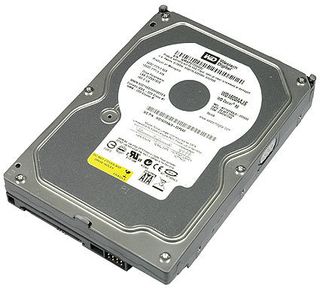The $300 PC
Intel Platform: Asus P5LD2-VM

At $90, the P5LD2-VM by Asus is certainly not cheap and there might have been more affordable options. However, it offers more flexible interface and upgrade options, and since we spent more money on the AMD processor than on the Intel Celeron, we had some extra money left in our $300 budget.
This board offers the same interfaces as the Foxconn board, but has a superior feature set. There are two 32-bit PCI slots, one x1 PCI Express slot and an x16 PCI Express slot. We also found four instead of two Serial ATA ports, a high-definition audio solution and a Gigabit Ethernet controller. Lastly, there are four DDR2 memory slots for DDR2-667 DIMMs instead of only two, and the four-phase voltage regulator is capable of supporting all current Core 2 processors at FSB800 and FSB1066 speeds (although our Celeron runs at FSB533). You do need the motherboard revision 2.0 to support Core 2 processors, though.
The graphics subsystem is part of the chipset, but it isn't really much more powerful than VIA's solution (although it does offer more performance). There is no dedicated graphics memory; yet this motherboard is capable of supporting all visual features of Windows Vista Home Premium or Ultimate.
Hard Drive

We picked Western Digital's WD1600AAJS because it is one of the fastest 3.5" 7,200 RPM desktop hard drives on the market, and it is available at a reasonably low price of $55. Our test showed quick access times and high data transfer rates, which are very much what you need in the first place. This product is based on a single platter design, which makes it run relatively cool and quiet as well. While 160 GB capacity certainly isn't too much, it's sufficient for the average user.
Stay on the Cutting Edge
Join the experts who read Tom's Hardware for the inside track on enthusiast PC tech news — and have for over 25 years. We'll send breaking news and in-depth reviews of CPUs, GPUs, AI, maker hardware and more straight to your inbox.
Current page: Intel Platform: Asus P5LD2-VM
Prev Page RAM: Go For 1 GB Next Page Case, Power Supply And DVD DriveMost Popular

